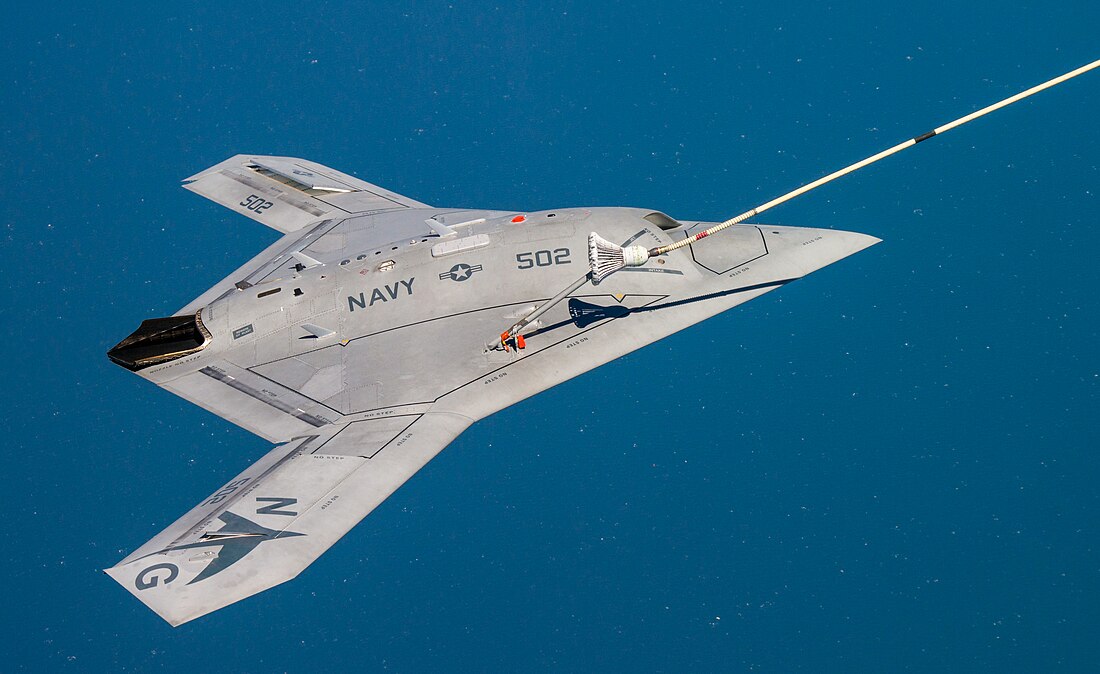Top Qs
Timeline
Chat
Perspective
Lambda wing
Combat aircraft wing design From Wikipedia, the free encyclopedia
Remove ads
A lambda wing is a wing common to modern combat aircraft. It is named for its similarity to the Greek uppercase letter lambda (Λ). Compared to the delta wing, the lambda wing design dramatically reduces the radar cross section, by breaking up the trailing edge. It is thus commonly featured on stealth aircraft. Due to aerodynamic characteristics, it is very common for lambda wings to be tailless.[1]


The design has been used by stealthy US strategic bombers, the Northrop B-2 Spirit and Northrop Grumman B-21 Raider.[1]
An early experiment with a lambda wing on smaller aircraft was the McDonnell Douglas X-36, which first flew in 1997.[2] It has also been developed for multiple unmanned combat aerial vehicles (UCAV), including Boeing X-45, Northrop Grumman X-47B, Dassault nEUROn, and BAE Systems Taranis.[3]
The UK-Italian-Japanese Global Combat Air Programme considered but abandoned a lambda wing design.[4] The wing is used in Lockheed Martin's "Vectis" proposal for the Collaborative Combat Aircraft program.[5]
In 2023, Beihang University researchers proposed moving wingtips as a solution to aerodynamic instabilities of the lambda wing, noting them as the cause of the 2008 Andersen Air Force Base B-2 crash. The Chinese Shenyang J-50, undergoing known flight testing since 2024, is reported to use a lambda wing design with moving wingtips.[6] During the 2025 China Victory Day Parade, a tailless lambda wing UCAV dubbed "Type A" was displayed among other drone designs.
The Boeing F-47 has been speculated to resemble the X-36's lambda wing, alongside the Boeing Bird of Prey and IAIO Qaher-313.[7]
Remove ads
See also
References
Wikiwand - on
Seamless Wikipedia browsing. On steroids.
Remove ads
